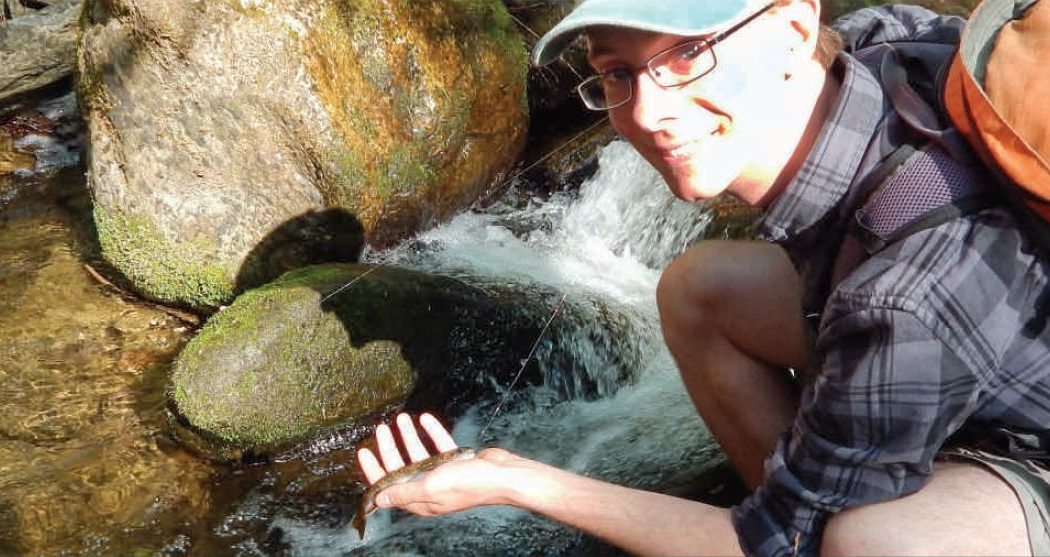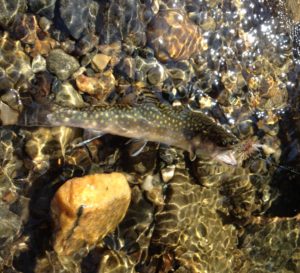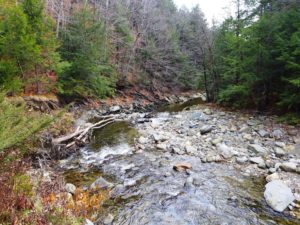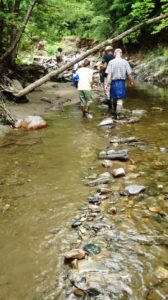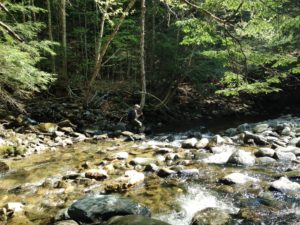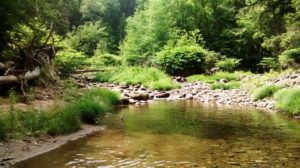The Deerfield River is one of the most important watersheds for wild brook trout, not just in Massachusetts but throughout the northeast.
Wild brook trout, or “brookies” are what scientists call an “indicator species” because they require clean, cold water to thrive. If a stream has a healthy brook trout population, we know that other species such as insects and macroinvertebrates are also doing well. Unfortunately, the northeast has seen a sharp decline in wild brook trout populations due to warming water temperatures, drought, pollution and loss of habitat.
Wild brook trout depend on small headwater streams, forested banks that shade and cool the water, and a host of trees and snags in the streambed that create both deep pools and fast moving water. Without these conditions, wild brook trout are susceptible to a dramatic population decline. According to the National Wildlife Federation, “Coldwater fish are extremely sensitive to changes in water temperature. If the water stays too warm for too long, the river will no longer provide a suitable home for the fish.”
Fortunately for local brook trout, Massachusetts Woodlands Institute (MWI), Franklin Land Trust (FLT) and Trout Unlimited (TU) have formed a partnership with a goal of restoring wild brook trout habitat and creating a resilient refuge for cold water fish in the Deerfield River watershed.
The West Branch of the North River, in Heath Massachusetts, runs through FLT’s 114 acre Crowningshield Conservation Area. FLT acquired this stunning property in 2014 with the help of TU local and regional chapters and the MA Department of Fish and Game (MA DFG) in order to protect the West Branch designated by MA DFG as sensitive habitat.
Soon MWI, FLT and Trout Unlimited will be working in the river itself to provide more cover for fish, create more pools and riffles, and connect the river with historic flood plains. We’ll create conditions that help wild brook trout spawn, as well as have more insects to eat and deeper places in the river to hide in during the hot, dry months of summer.
Simply put, we will be making a mess, trying to replicate how nature would historically treat streams over time.
A healthy, natural wild stream would have a shallow channel that ribbons through the landscape. Large mature trees growing on the stream bank would naturally fall into its path, creating cover, disruption, and retention of gravel and sediment. Healthy streams are a lovely, dynamic mess whose shallow channels quickly breach its banks and inundate its forested flood plains when powerful storms hit, acting as a relief valve in such events, dissipating the storm’s power.
How does one make a beautiful mess without making a MESS? Carefully. To do this, we’ll actually place logs and whole trees right in the river. We will work only during low-flow periods of the year and obey all regulations protecting stream and river health. A local forestry operator will carefully place what is called “large wood” in the river to mimic the natural process of trees falling into rivers.
All of this work will be done as a demonstration and learning laboratory that will create lessons for others who want to improve habitat in rivers. Most land along streams and waterways is privately owned. To help landowners steward our cold water resources, MWI, FLT and TU are developing a “Forests for the Fish Toolkit,” based on the work at Crowningshield Conservation Area.
This will help landowners and land managers recognize cold water fish streams, learn what fish, insects , birds and mammals benefit from it, and know how to work with professionals and local regulators to make their cold water streams vibrant and resilient.
With more powerful storms and droughts likely heading our way, the lessons we are gathering at Crowningshield will be more valuable than ever. Thanks to your support and involvement, fish and other species that depend on these cold water streams will find refuge in the Deerfield River watershed.
Forests for the Fish is an innovative fisheries management pilot project, modeled after the success of the Vermont and Massachusetts Foresters for the Birds program, which has been implemented across the north east region. This project is designed to enhance stream connectivity in the Deerfield River Watershed to provide habitat for cold water fish such as native brook trout which are experiencing habitat loss at an alarming rate.
The goals of the Forests for the Fish project are to:
- Enhance in-stream habitat conditions and stream connectivity for native cold water fish in the Deerfield River Watershed;
- Provide high-quality education and riparian forest management tools for landowners and land management professionals;
- Provide climate change adaptive stream management techniques to community members which increase resilience of built infrastructure;
- Support economic viability of forest and stream related businesses in our region.
All photos courtesy of Franklin Land Trust.
NOTE: This article originally appeared in the Spring 2017 newsletter of the Franklin Land Trust. Reprinted by permission.
Download Spring 2017 newsletter to see original article.
See more information on the Forests for the Fish Toolkit.
See more info on the Crowningshield Conservation Area.
Read the win-win-win story of how the Crowngshield Farm became a conservation and restoration area.

